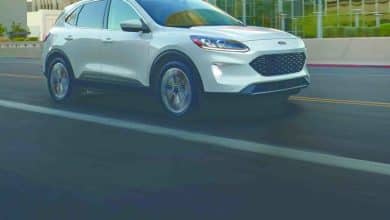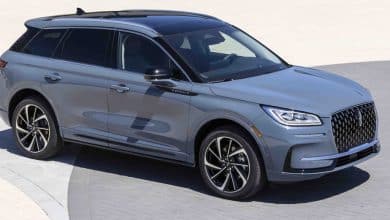The 10 most anticipated electric vehicles

The electric vehicle market is booming. Newcomers arouse curiosity.
Contents
Audi Q4 e-Tron

PHOTO SAGMEISTER_POTOGRAPHY, PROVIDED BY AUDI
The Audi Q4 e-Tron
Called the chic cousin of Volkswagen’s ID.4, the Q4 e-Tron intends to promote other facets of its personality to justify its higher price. The operation of charm begins with the sharp plastic of the two bodies (a Sportback version with a coupe profile is in the catalog) offered. These bodies envelop a cabin lined with high-quality materials and innovative technologies, such as this optional augmented reality head-up display ($ 1,600).
The firm with the rings also intends to stand out from Volkswagen’s offer by offering all-wheel drive as standard, offered for an additional charge on the ID.4. That said, if the running gears were dressed differently, the basic architecture remains the same. The Q4 e-Tron uses the same technical base (MEB platform) intended for the electric models of the Volkswagen group. We therefore find a battery of 82 kWh (including 77 kWh useful).
BMW iX

PHOTO PROVIDED BY BMW
The BMW iX
Of all the electric vehicles that BMW is promising in the coming months, the iX is downright the most spectacular of all. This model inaugurates a new era for the Bavarian manufacturer. It is of a size comparable to the current X5, and BMW indicates a capacity of 100 kWh for the battery, as well as an average consumption of 21 kWh / 100 km. But these values should change between now and the first deliveries, scheduled for the end of 2021.
The BMW iX introduces fifth generation engines, of in-house design, which have the advantage of dispensing with any recourse to rare earths. In a single housing, BMW brings together the electric motor, its electronics and its transmission: a compactness that should facilitate its integration into all kinds of chassis, under various bodies, starting with the BMW i4 sedan, expected at the end of 2021.
Cadillac Lyriq
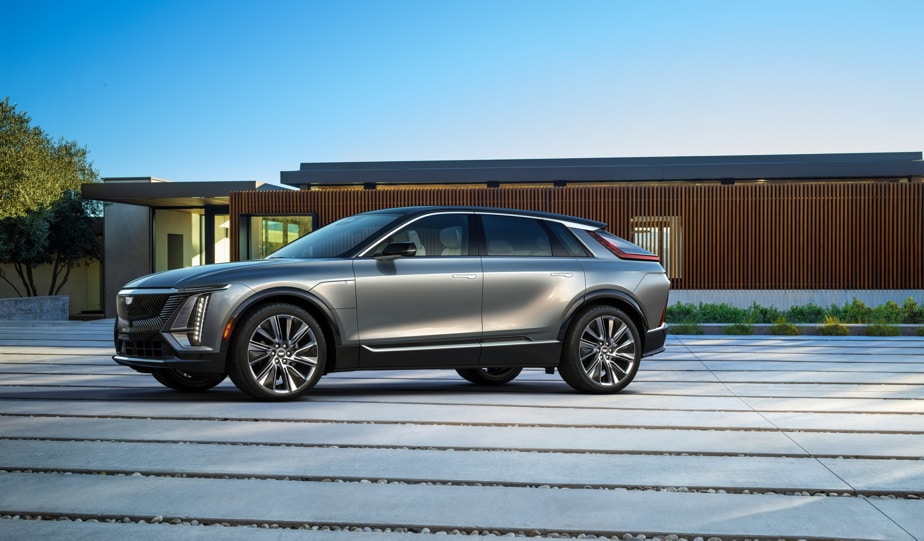
PHOTO PROVIDED BY CADILLAC
The Lyriq
Revealed in 2019 in conceptual form, the Lyriq is preparing to take to the streets. This US-built Cadillac will release the in-house design Ultium battery and, in addition, the Ultium Drive system of five motors and three interchangeable transmissions for electric cars. The parent company, General Motors, has invested hundreds of millions of dollars in its realization.
As a reminder, remember that the Ultium battery innovates by replacing cobalt with aluminum and would have an extended lifespan. This technology is being studied by GM in partnership with the Korean LG Chem. In the case of the Lyriq, a 100 kWh battery (preliminary data) announces a range of some 480 kilometers and a very fast charge. Note that the architecture of this Cadillac will give birth to an electrified Acura. Indeed, General Motors has concluded an agreement with Honda, which will dress this American architecture with its own bodywork.
Ford F-150 Lightning
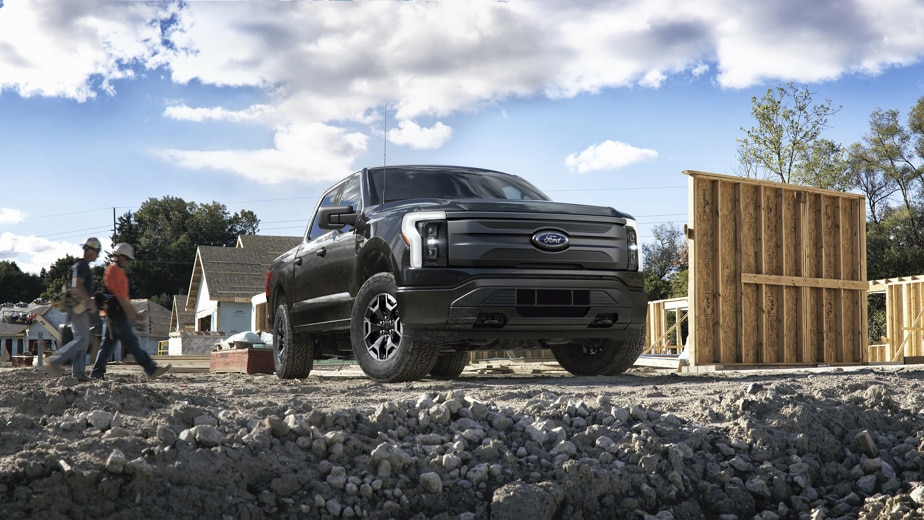
PHOTO PROVIDED BY FORD
The Ford F-150 Lightning
Anxious not to be tampered with by Tesla (Cybertruck), Rivian (R1T) or Bollinger (B2), Ford promises to electrify the F-150 next spring – the Lightning version. To convince, this van claims to be able to achieve several feats.
It promises to tow a load of over 4536 kg, to reach 100 km / h in about 4 seconds and, finally, to be used to supply tools on a construction site, or even an entire household for three days, in the event of power cut. The size of the batteries had not been revealed at the time of publication, but Ford estimates that the Lightning will have, depending on the configuration chosen (one or two engines), a range of up to 483 km.
Ioniq 5

PHOTO DAVID DEWHURST PHOTOGRAPHY, SUPPLIED BY HYUNDAI
The Ioniq 5
Inspired by the concept45 presented at the 2019 Frankfurt Motor Show, the Ioniq 5 is based on an E-GMP platform intended for the entire Hyundai group (Hyundai-Kia-Genesis). This architecture offers a lot of freedom to designers and engineers, as evidenced by the clearance on board. The flat floor allows an impressive clearance. And flexible, in addition. Indeed, the central console slides 140 mm.
Hyundai is also announcing a load volume of 531 L to which we can add 57 L under the front hood for two-wheel drive models; half as much for the all-wheel drive version. When it is marketed in the fall, Hyundai will offer several versions, based on two battery models, 58 kWh and 72.6 kWh. According to the estimates of the South Korean manufacturer, the autonomy will happily exceed 400 km. Finally, the Ioniq 5 embeds the V2L reverse charger technology which allows any type of electrical device to be used or recharged, whether stationary or while driving.
Kia EV6
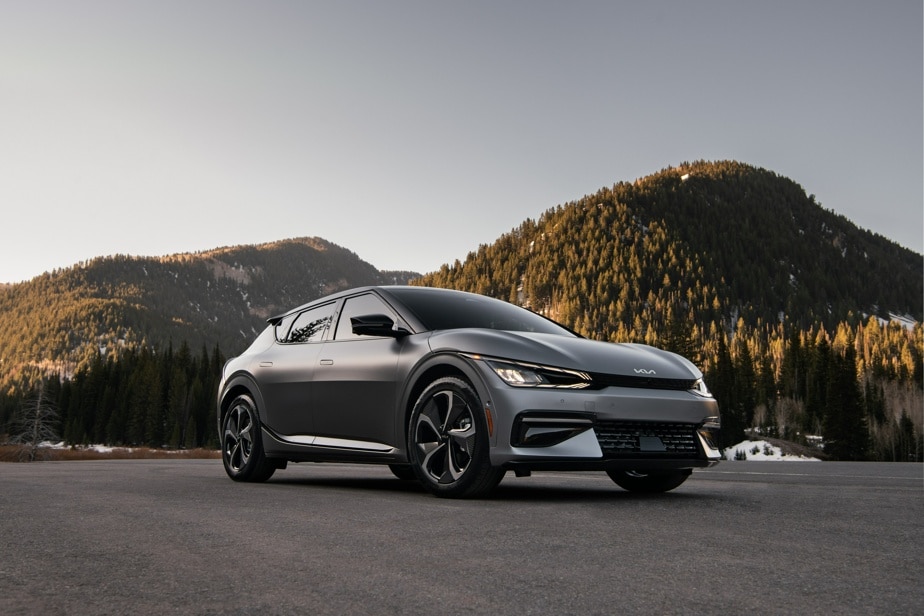
PHOTO PROVIDED BY KIA
EV6
Designed under the supervision of Montreal stylist Karim Habib, Kia’s EV6 wraps around the E-GMP platform developed by the Hyundai group. This imposing vehicle with sculptural lines and an original light signature is the first of 11 electrified vehicles promised by Kia by 2025.
In the case of the EV6, two drive modes will be offered: propulsion or all-wheel drive. The latter mode has two electric motors, compared to only one for the rear-wheel drive version. The EV6 will be able to tow a load equivalent to 1600 kg, as long as the battery autonomy exceeds 35%.
Mazda MX-30

PHOTO PROVIDED BY MAZDA
The Mazda MX-30
Quebec and British Columbia will be the first Canadian provinces to experience Mazda’s MX-30 this fall. This vehicle equipped with antagonistic doors restricted, at its beginnings, its offer to a battery with the relatively modest capacity (35.5 kWh), which limits both its weight and its autonomy.
The latter is estimated at some 160 km. We will have guessed that Mazda intended this model for urban and peri-urban uses. A thermal energy extender – in the style of the Chevrolet Volt and BMW i3 – will complete the range over the next year pending this gasoline engine which, for reasons of size and weight, will have a rotary piston.
Mercedes EQS

PHOTO PROVIDED BY MERCEDES
The Mercedes EQS
We waited – for a long time – for the utility EQC, but it is ultimately the EQS, a sedan, that falls the role of leading the offensive of the electric subsidiary of Mercedes, EQ, on Canadian soil. The idea is good insofar as the EQS represents the technological showcase of the brand and intends to demonstrate it in particular thanks to a record autonomy.
At the time of writing, Canadian management reports a range of some 700 km for the EQS 580 4Matic version, while specifying that an even more powerful version is being developed. Performance accomplished using a 108 kWh battery.
Nissan ariya

PHOTO JAY MCNALLY MCNALLY MULTI MEDIA, SUPPLIED BY NISSAN
The Nissan Ariya
Ten years after the Leaf, okay, but with invaluable expertise, the Nissan company is launching the Ariya. This model features a new architecture (code name CMF-EV) dedicated to the future electric vehicles of the Renault-Nissan-Mitsubishi alliance. Presented in conceptual form at the 2019 Tokyo Motor Show, the Ariya will exhibit in the street the same aesthetic codes, namely a receding roofline and an illuminated grille in its center with the brand’s new logo.
From a technical point of view, this Nissan will integrate, depending on the drive mode selected (traction or all-wheel drive), one or two engines. The buyer will then have to determine the capacity of the battery (63 or 87 kWh) which will supply them. Commercialization is expected to begin at the end of the coming year or – a consequence of the pandemic and the shortage of microprocessors – in the first quarter of 2022.
Toyota bZ4X Concept / Subaru Solterra

PHOTO PROVIDED BY TOYOTA
The Toyota bZ4X Concept
Faced with the transition to all-electric, Toyota’s management had so far shown a cautious wait-and-see attitude. A champion of hybrid engines and an ardent defender of the hydrogen fuel cell, the automaker closely followed the speed and diversity of technical developments. We know that the number one Japanese is particularly interested in dry or solid battery, according to the expression chosen (solid-state battery).
The bZ4X concept (our photo) will probably not be equipped with it. At the time of this writing, Toyota is silent on the technical data of this model, which is similar in size to that of a RAV4. Note that Subaru, partner in this adventure, will market its own variation of this model under the name Solterra. Both of these vehicles will likely be visible by the second quarter of 2022.




